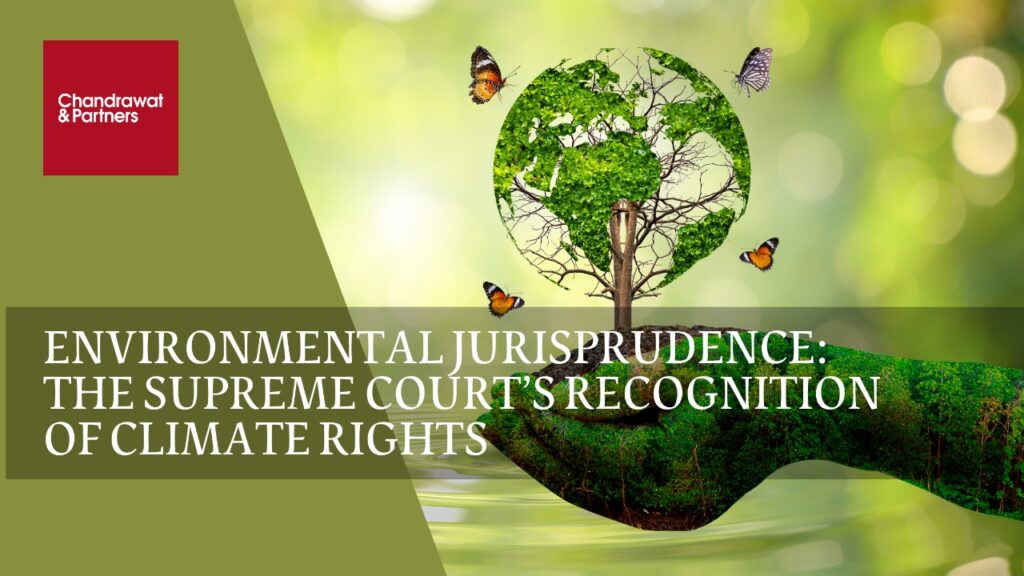Share :
Introduction
The effects of climate change are increasingly evident through warmer average temperatures and more extreme weather events. There is no doubt that the human activities produces most of all these industrial pollutants, plastic trash, and overuse of fossil fuels, all of which have an ultimate negative impact on the planet and all of its inhabitants. In the recent judgment dated March 21, MK Ranjitsinh And Ors. v. Union of India and Ors. the apex court has recognized a right to be free from the adverse effects of climate change as a distinct right.
BACKGROUND
- The Supreme Court intervened in the case of K. Ranjitsinh and Ors. Vs. Union of India and Ors. to safeguard the environment and endangered species, particularly the Great Indian Bustard and Lesser Florican.
- Both species are critically endangered, with the Great Indian Bustard nearly extinct from its natural habitat, surviving only in parts of Gujarat and Rajasthan.
- The Power Line Mitigation, 2018 report estimated that 1 lakh birds die each year as a result of collisions with power lines, supporting the petitioners’ claim that overhead cables are the biggest threat to the Great Indian Bustard’s existence.
- Six Great Indian Bustards died in Thar between 2017 and 2020, all due to collisions with high-tension transmission lines.
- The Ministry of Power acknowledged the vulnerability of the Great Indian Bustard to power lines due to its limited frontal vision, often leading to collisions or electrocution.
- The petitioners sought interim directions to the states of Gujarat and Rajasthan to implement predator-proof fencing and controlled grazing, and to prohibit the installation of overhead power lines, windmills, and solar infrastructure in identified priority habitats
KEY ISSUES
- Recognition of Climate Change as a Fundamental Right: Central to the case was the argument that every individual has a fundamental right to a clean and healthy environment, free from the adverse effects of climate change. The petitioners contended that the government’s failure to take adequate action to address climate change infringed upon this fundamental right.
- Government Accountability and Action: The petitioners called for greater accountability from the government in tackling climate change. They argued that the government had a constitutional duty to protect the environment and mitigate the impacts of climate change through policy measures and legislative action.
- Conservation of Biodiversity: Another crucial aspect of the case was the conservation of biodiversity and natural habitats. The petitioners emphasized the importance of preserving ecological balance and protecting endangered species from the ravages of climate change and habitat destruction.
COURT’S DECISION
In a landmark ruling, the Supreme Court of India recognized the right to a clean and healthy environment as a fundamental right under the Constitution. The court acknowledged the grave threat posed by climate change and directed the government to take immediate and effective measures to combat it. The verdict emphasized the need for proactive policies, stringent regulations, and international cooperation to address the challenges of climate change and protect the environment.
The Court noted that the absence of legislation in India regarding climate change would not mean that “the people of India do not have a right against the adverse effects of climate change.”
Following this, the Court cited landmark judgments, including M.C. Mehta v. Kamal Nath, which has recognized the right to a clean environment as a part of Article 21 of the Constitution. However, at the same time, the Court also underlined that “it is yet to be articulated that the people have a right against the adverse effects of climate change.”
IMPLICATIONS
The verdict in the MK Ranjitsinh case carries far-reaching implications for environmental law and policy not only in India but also globally. It underscores the growing recognition of climate change as a critical issue requiring urgent attention and concerted action. The case sets a precedent for future litigation aimed at holding governments accountable for their environmental responsibilities and advancing the cause of climate justice.
CONCLUSION
The court advocated a balanced approach and observed that a right direction for undergrounding high voltage and low voltage power lines of the nature that was directed by the Court earlier in 2021 would need recalibration. “While balancing two equally crucial goals – the conservation of the Great Indian Bustard on one hand, with the conservation of the environment as a whole on the other hand – it is necessary to adopt a holistic approach which does not sacrifice either of the two goals at the altar of the other.”
For more information or queries, please email us at
[email protected]





